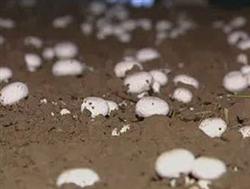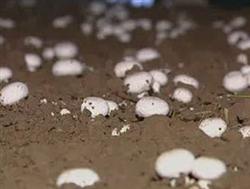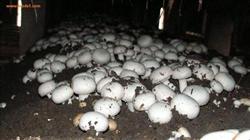Using waste of Pleurotus ostreatus and Pleurotus ostreatus as organic fertilizer

Edible mushroom bran is rich in organic matter and a variety of mineral elements. According to the examination and analysis of the soil and Fertilizer Institute of Henan Academy of Agricultural Sciences, total nitrogen: 1.95%, total phosphorus: 1.37%, total potassium: 1.75%, organic matter: 62.3%. Bacterial bran contains many trace elements such as calcium, phosphorus, sodium, copper and so on. Using bacterial bran as organic fertilizer can reduce the application amount of chemical fertilizers and pesticides and their residues in agricultural products, and improve the yield and quality of agricultural products. It provides a guarantee for the production of organic food. After the application of edible mushroom bran organic fertilizer in the soil, humus with good aeration and water storage capacity can be formed, which is of great significance to improve soil and improve soil fertility. In addition, some kinetin substances and enzymes are secreted during the growth of edible fungus mycelium, and these enzymes can decompose complex organic matter into nutrients that can be easily absorbed by plants. In Japan, the dilution of mycelium extract from edible mushroom bran is used to make plant hormone, which is sprayed on cucumber, tomato, eggplant, lentil, soybean and other crops, which can promote crop growth and increase yield. For example, when used in soybean crops, it can make soybean stems and leaves strong, enhance disease resistance, and increase by 2.6 times. In the experiment of adding beneficial biological bacteria or suitable bacterial preparation to waste bacterial bran in a variety of vegetable crops, it was found that the effect of microbial plus bacterial bran was the best, providing plant nutritional activity, reducing the cost of agricultural production, and significantly increasing the yield of crops. In addition, the configuration of organic nutrient soil with edible mushroom bran is also widely used in flowers. The cultivation of flowers such as camellia and orchids in nutritious soil with bacterial bran fertilizer can not only enhance the disease resistance of flowers, but also promote their quality, meet the needs of flower growth and development, and is a valuable resource instead of humus soil.
- Prev

Interplanting technique of Cucumber and Pleurotus ostreatus in Solar greenhouse
1. The proportioning and composting technology requires 1500 kg of wheat straw, 1250 kg of cow dung, 40 kg of phosphate fertilizer, 40 kg of gypsum and 50 kg of lime with a pH value of 7.5-8. 1. According to the formula, the wheat straw was pre-wet and soaked in water in batches. When the wheat straw absorbed water evenly, it was stacked to one side of the yard in layers. 2. Wheat straw.
- Next

Effective measures to control the size of Pleurotus ostreatus
In recent years, the market demand for the quality of Pleurotus ostreatus continues to improve, large mushrooms are not popular, some mushroom farmers can not keep up with the market demand to produce certain specifications of commercial mushrooms, resulting in increased production but not income. The specification can be controlled by the following measures. The strain "2796", which is now widely used in replacement strains, is a large-grained strain.
Related
- Fuxing push coffee new agricultural production and marketing class: lack of small-scale processing plants
- Jujube rice field leisure farm deep ploughing Yilan for five years to create a space for organic food and play
- Nongyu Farm-A trial of organic papaya for brave women with advanced technology
- Four points for attention in the prevention and control of diseases and insect pests of edible fungi
- How to add nutrient solution to Edible Fungi
- Is there any good way to control edible fungus mites?
- Open Inoculation Technology of Edible Fungi
- Is there any clever way to use fertilizer for edible fungus in winter?
- What agents are used to kill the pathogens of edible fungi in the mushroom shed?
- Rapid drying of Edible Fungi

